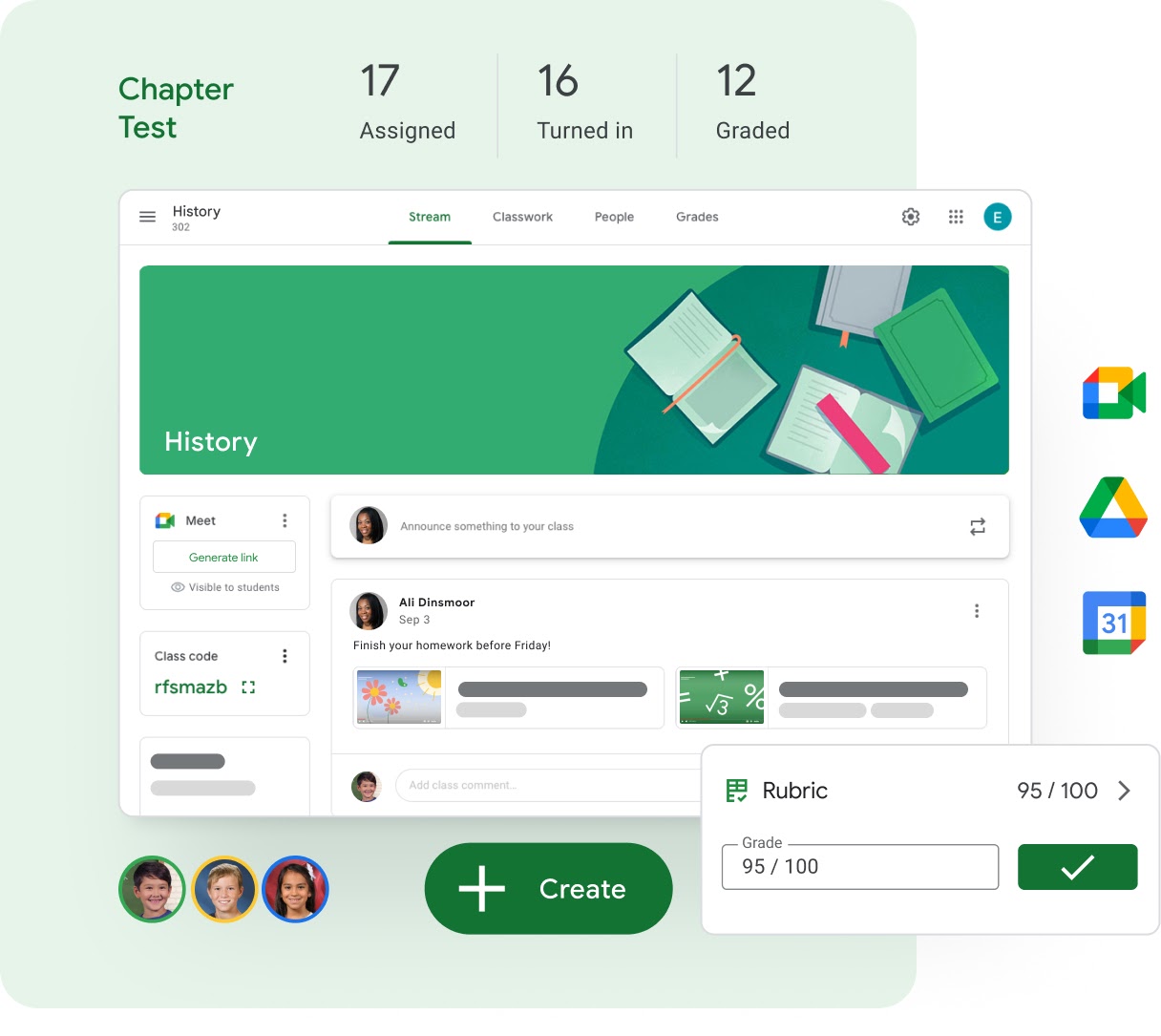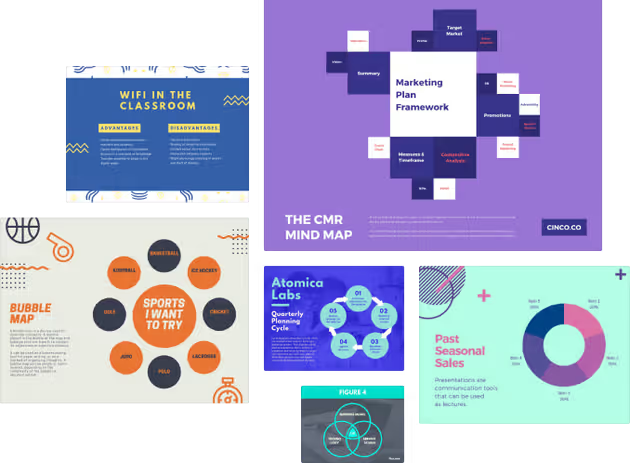How Technology in Education Improves Student Engagement

Table of Contents
- Key Takeaways
- Using Technology in Education
- How Technology Influences Teaching Practice and Student Engagement
- Participation vs Engagement - What’s the Difference?
- Technology-Based Activities to Increase Student Engagement
- 8 Ways to Use Technology in Education
- Education Technology Experiences to Help Students Learn and Grow
- Technology and the Future of Education
Key Takeaways
Schools in Australia are using more and more technology to make learning fun and personalized for students. Thanks to programs like the Digital Education Revolution, classrooms are getting filled with cool tech tools. These tools help teachers teach better and let students learn in fun ways, like through games, virtual reality, and smart computer programs. But remember, just because you're using tech doesn't mean you're truly learning. Real learning means you really understand and connect with what you're studying. And no matter how much technology we have, we'll always need our teachers to guide us and make learning complete.
Continue reading for an in-depth look into how technology in education boosts student engagement and its benefits.
Young people are digital citizens, raised with technology at their fingertips. Modern teaching strategies are harnessing its power to enhance student engagement and an individualised approach to learning.
Using Technology in Education
There is no doubt that the use of technology in education is on the rise. According to a report by ACER, the use of digital technologies has grown rapidly in this century. The proportion of Australian students with access to a computer at home rose from about 91 percent in 2000 to over 99 percent in 2013. Over the same period, access to the internet grew from 67 percent to 98 percent.
As the ACER report notes, Australian students’ school computer use was increased when, between 2008 and 2012, the National Partnership Agreement on the Digital Education Revolution (DER) provided more than $2 billion for purchasing computers and software for all students in years 9 to 12. The aim was to arm students with the ICT skills for high-quality learning outcomes and successful contribution to society and the economy.
According to the National Center for Education Statistics's study released in 2020, roughly half of schools strongly agreed that teachers in their school want to use technology for teaching (49 percent).
A 2017 Australian Government report showed that, in primary school, computers were most commonly used to help students develop specific skills in academic areas, with use becoming more frequent as children got older.
The report also looked at educational technology in secondary school English classes, finding it was most frequently used to learn or practise basic skills such as reading, preparing written text, corresponding with others and conducting research.
Use of education technology in English classes was more frequent when children were aged 14-15, compared to when they were 12–13.
Moreover, the use of information technology in modern teaching looks set to grow further. This 2016 study by Pearson Education, for example, showed that Australian educators feel there is more drive than ever to make greater use of technology in the classroom. They note that 64 percent of Australian schools are working towards using mostly online resources. Only 8 percent of educators indicated that their schools returned to using more printed materials after venturing into digital.
How Technology Influences Teaching Practice and Student Engagement
Given the growth of education technology, you might be wondering what it means for the modern classroom. As expected, it has impacts for both students and teachers.
For teachers, information technology can form a crucial part of their teaching style. They might use online resources, software programs or apps to help their students engage with and learn concepts from various curriculum areas. For example, Minibeast Heroes, a six-part educational mini-series, helps primary school students engage with science content. Developed in a collaboration between ABC Education and Deakin University’s Motion Lab, each short, highly-engaging episode teaches students about a different insect, drawing on links to the Australian Curriculum.
Research is still uncovering how teachers are adapting to increased use of technology-based learning processes. For those accustomed to a low-tech teaching style, this becomes part of their growth and professional development. For others, perhaps digital natives themselves, their concept of modern teaching is inextricably tied with technology.
A study published in the journal ‘Research in Learning Technology’, highlighted that change in digital scholarship is a complex and personal process. They discovered four areas in which teachers’ use of digital technology changes over time – knowledge, learning organisation, pedagogy and core approaches to teaching. They found that some teachers showed faster, more consistent change in their practices with digital technology than others. They also note that changes reflected individual knowledge and beliefs.
They add that any support teachers need to implement education technology should acknowledge, and build upon, their professional understandings and aspirations.
Another noteworthy perspective comes from a 2021 review on effective practice principles by ACER. The findings emphasised the importance of blending technology with pedagogical strategies. Effective technology-enhanced teaching isn't just about using the latest tools; it's about integrating them in a way that complements and enhances traditional teaching methods. This underscores the necessity for educators to not only be tech-savvy but also pedagogically sound. It's a delicate balance, ensuring technology serves as an enabler, rather than a replacement, of foundational teaching practices.
“...The design and delivery of online teacher resources will help to ensure that teachers find the learning materials and tools to be meaningful, educationally sound and user-friendly. Therefore, teachers will be able to learn more effectively, become more confident in applying their newly acquired knowledge and ultimately transfer these skills to their classrooms to improve student engagement and learning outcomes” (Ahmed, et al. 2021). Rapid review of effective practice principles in the design and delivery of digital resources for teachers. Life Education Australia, 1.)
Adding to the ongoing conversation about the influence of technology in education, researchers have recently delved into the world of immersive virtual reality (IVR). A paper written in 2023 titled, ‘Examining the relationships between students' perceptions of technology, pedagogy, and cognition’ emphasises the potential of IVR mini-games in fostering computational thinking in education. The study intricately explores how specific game elements, such as challenge, goal clarity, and feedback, can serve as pedagogical tools. Moreover, it investigates the connection between features of IVR, like immersion and interaction, and students' cognitive perceptions. As education technology continues to evolve, the potential of IVR in shaping student experiences and outcomes cannot be overlooked.
“The introduction of these concepts into schools’ curriculum allows young learners to have digital literacy and develop thinking skills that can foster their ability to computationally solve real-world problems” (Agbo, et al. 2023). Examining the relationships between students’ perceptions of technology, pedagogy, and cognition: the case of immersive virtual reality mini games to foster computational thinking in higher education. Springer Open, Volume 16, 2.
Participation vs Engagement - What’s the Difference?
So, what exactly does “student engagement” mean, you might be asking. It’s a good question, and one that’s still under debate by education researchers.
An important thing to note is its difference to participation. It’s possible for a student to participate in class without being deeply engaged with the subject matter. They might raise their hand and answer questions they know, but that doesn’t necessarily mean they have thought through the content. For example, a student in maths class might be able to solve problems quickly using a formula, but they may not understand why that formula works and how to apply it in different contexts.
In contrast, student engagement involves meaningful learning.
The Victorian Government’s Department of Education and Training note that student engagement is complex and hard to define because it is influenced by many factors.
However, educational research has identified three elements of engagement:
- behavioural engagement – this is about a students’ participation in education, including social and extracurricular school activities as well as academic ones
- emotional engagement – including a students’ emotional reactions in the classroom and the school community (a sense of belonging or connectedness to the school)
- cognitive engagement – a students’ investment in their learning (including their motivation and self-regulation).
Some factors that influence student engagement include:
- teacher factors – such as their interaction style, amount of support provided, responsiveness, and behavioural and academic expectations
- school factors – including the physical setting factors (eg classroom layout, noise and lighting levels), and how the school supports and disciplines students
- student factors – such as a student’s emotional, physical, cognitive and behavioural state, including issues such as health, disability and peer relationships
- family and community factors – including a student's residential circumstances, amount of family support for/involvement in education, and family relationships
- curriculum and resources factors – such as the availability and type of learning resources (including education systems and education technology), learning task factors (e.g. level of difficulty, interest, meaningfulness), access to education tools, the learning goals and objectives, and assessment approaches.
Technology-Based Activities to Increase Student Engagement
When it comes to boosting student engagement, there are many technology-based learning options. Here’s just a few, derived from sites including Classcraft and Education Dive.
1. Gamification of Learning
Most kids are familiar with playing video or online games, and the information technology used to make gaming so engaging has been employed in some learning tools. Digital games can communicate new material, make learning more fun, and make it easier for students with disability or special needs to participate. By tapping into students’ competitiveness, they can also encourage students to work harder than they otherwise might.
Examples of technologies that use gaming principles include Kahoot!, where participants answer questions on their device while competing against classmates, and Classcraft, which offers various games and tools to make the classroom more engaging.
2. Videos
If you’ve seen a great movie, you’ll understand the power they have to engross their viewers. In the same way, watching educational videos can be highly engaging for students.
With the plethora of educational videos around, teachers have a readily available source for every subject you can think of. For example, Dr Karl Kruszelnicki, the well-known Australian science communicator, has multiple videos available on YouTube. And many classic novels and plays in the English curriculum have been transformed into modern movies.
3. Personalised Activities
In larger classrooms, or when teachers want to align an activity to a students’ learning needs, online activities can be a great option.
Many such activities are not only fun, but programmed to monitor a students’ responses and adjust the difficulty accordingly. They can also provide feedback, so students know what they’re doing right, or get help with material they’re finding difficult.
8 Ways to Use Technology in Education
Here’s another seven ways teachers might use education technology in the classrooms, with thanks to Classcraft, Education Dive and Chalk.
1. The Flipped Classroom Model
This model leverages technology by involving students preparing for class at home by listening to podcasts, doing readings, and/or watching videos. An online platform is used to deliver materials, which students access with their home computer or school device.
Classroom time is then used to discuss and interact with the materials. This method can be highly engaging. The downside is that it relies on having adequate technology and family support at home, which can disadvantage some students.
2. Google Classroom
After working with educators, Google created their Classroom – a tool they say allows teachers to create classes, lesson plans, distribute and mark assignments, send feedback in real time, and see everything in one place. It has been designed to be engaging and offer options for students of all levels. Students can continue learning their material if a teacher is absent or if their school has days off for weather events. It also integrates with many programs like Classcraft and Quizlet.
3. Online Quizzes
Speaking of quizzes, there are several online ones that allow students to practice and review their learning materials. Quizlet, for example, is an online flashcard platform offering individual review games and an interactive mode where students can work in teams to get the right answers.
Similarly, Quizizz provides individual quizzes on various topics, allowing students to work on their own or compete against classmates.
4. Student Response Systems
Another way students can interact in the classroom is with free apps, such as Socrative and Verso, which allow them to answer questions, take quizzes, and compete against each other. These apps can be run on each students’ device and linked with electronic whiteboards.
5. Technology-Based Assignments
Rather than having them deliver old-fashioned paper essays, some teachers are encouraging students to use technology to demonstrate their learning. Having them create podcasts and videos allow students to develop new skills, display their creativity and demonstrate their learning.
With most smartphones having cameras and voice recording apps, it’s easy to make videos and podcasts, which can then be shared on YouTube or Soundcloud.
6. Work With Students Around the Globe
You may have had a pen pal at school and looked forward with anticipation to receiving their next letter. Now, with the instant communication offered by the internet, students can learn about culture, history and geography by talking to students from other countries.
Programs like Skype and Zoom allow for online interaction between individuals and groups, and even virtual field trips and virtual classrooms.
7. Virtual/Augmented Reality
This highly interactive tool opens up realms of possibility, allowing students to experience accelerated learning in a way never previously possible. For example, students can take a 3D tour of the human body, or virtually visit different places and times.
Cost remains a prohibitive factor, but as this emerging technology becomes more affordable and accessible, it’s likely to play an increasing role in classrooms.
8. Machine Learning
Machine learning, a subset of artificial intelligence, is making waves in the educational sector. Machine learning technology provides students with tailored educational experiences. Platforms utilise this technology to analyse a student's interaction with content, identifying areas of struggle and strength. It then customises learning paths, ensuring that each student gets the right amount of challenge. For example, if Gillian struggles with algebra but excels in geometry, the system might offer her more algebra-related exercises. This not only makes learning more efficient but also deeply personal. There are concerns, of course. What about data privacy? And, can a machine truly replace the intuition of a seasoned teacher? As with all technology, there's a balance to strike. But as machine learning becomes more refined, its potential in classrooms is undeniable.
Education Technology Experiences to Help Students Learn and Grow
Here are some experiences that are being used to improve student growth and learning.
1. Creating Infographics
Infographics are visual representations designed to allow complex information to be digested quickly. They usually present several facts or statistics in an easy-to-read and visually appealing format. For example, they might be used to display health statistics or findings from a study.
Free programs such as Canvaand Piktochart are a great way to create good-quality infographics, or for more advanced functions try design software such as GIMP and Photoshop.
2. Recording Reading
Fluency and expression are difficult concepts to grasp and students don’t always know what they sound like when they’re reading. By recording and playing back a students’ reading (on a device, for example), they can hear any pronunciation errors and what it sounds like to read with fluency and expression.
3. Government Digital Education Resources
Some government education departments have collections of digital resources. These, from the New South Wales Government, cover a vast range of topics and links to Scootle – a national library containing more than 20,000 digital learning and teaching resources aligned to stages of learning and subjects.
4. Electronic Books and Readers
The rise of eBooks has made it easier than ever to access great reads, anywhere. E-readers are usually cheaper than tablets and use less power, so battery life is longer.
Their matte-finish screen and e-ink technology are designed to emulate reading print on paper and they are easier to read outdoors than backlit tablet screens.
5. Study and Productivity Apps
An online search will reveal a glut of app options to help students use time effectively and manage their study load.
6. Kidblog
Kidblog is an online platform where students can start their own blog related to the curriculum. Their audience might include other classes in their grade or students on the other side of the world. Other students and parents can comment on their work.
Teachers can monitor all activity within their community of authors and need to approve all content before it goes live. This makes it a great platform for students to practise having a digital presence, without the dangers of the internet.
Technology and the Future of Education
With education technology already entrenched in modern teaching, you might be wondering what the future holds.
There are many ways it could impact future learning opportunities. One of these is making the learning experience more personalised by accommodating different students’ learning styles. This shift is also likely to make students more independent in the classroom and able to take greater responsibility for their digital learning.
Technologies that adapt to a students’ skill level and modify tasks accordingly are already available and could become more prevalent. NAPLAN Online is an example of an assessment that adjusts as each student progresses through the questions. Artificial intelligence and machine learning could take the lead here.
Adaptive technologies and learning management systems will likely get better at supporting students with special needs or disability.
Another change is the shift from equipping students with knowledge and skills to be good workers, to being able to think critically, work collaboratively and adapt in an ever-changing global world. With the availability of information at the fingertips (or voice search), the need to sift through encyclopaedias is gone. Instead, students must know how to sort quality information from that which is false or misleading.
As Brian Greenberg, CEO of Silicon Schools, told Business Insider: “The real purpose of education is for the brain to be empowered with information. We’re teaching students to learn to think, to learn to learn, and to critically assess a situation.”
This is particularly true for Christian students, who will be exposed to many opposing views with seemingly rational arguments behind them. Equipping them with knowledge of the truth, and the ability to support their views, will help Christian young people defend their faith, whether in person or online.
You might be wondering whether teachers will become obsolete, but don’t worry. Students have needs – like support, guidance, encouragement and a sense of belonging – that no machine can replace. Moreover, teachers have training in how to bring out the best in students and assess their work at a level that can’t be emulated by technology. It’s more likely that teachers will use education technology in ways that reduce mundane work and allow greater focus on meaningful, engaging tasks – a win for all concerned.





